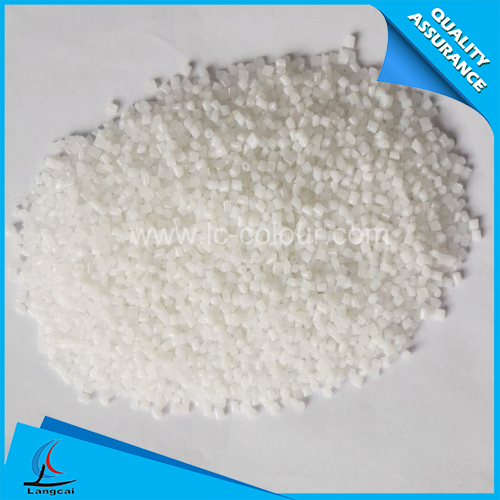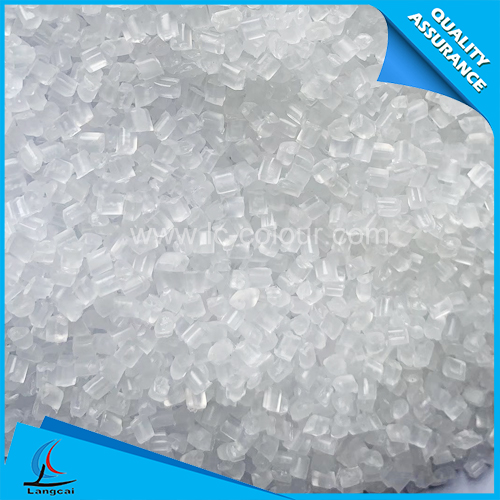- Nonwoven Fabrics
- Tailor Made Masterbatch
- Plastic Masterbatch
- Chemical Fiber Masterbatch
- Functional Masterbatch
- Machinery
- Spunbond PP Nonwoven Masterbatch
- Mono Color Masterbatch
- Liquid Color Masterbatch
- Non-woven Masterbatch
- Polyester Fiber Masterbatch
- Nylon Fiber Masterbatch
- Polypropylene Fiber Masterbatch
- Lab Nonwoven Machine
- Lab BCF Machine
- Dryer
- Filler Masterbatch
- How can the refined cotton industry navigate through the trade fog between China and Japan
- Why choose Mono Color Masterbatches? Three major advantages highlight value!
- The "Symbiotic code" between domestic and overseas markets
- The application advantages of Plastic Masterbatches are remarkable!
- How will the "balanced development of imports and exports" be promoted during the "15th Five-Year Plan" period?
- Why choose Mono Color Masterbatches?
- Phone:00836 - +86-535-8484358
- Email:wendy@ytlc-colour.com
- Address:DALAN INDUSTRIAL PARK, ZHANGXING TOWN, ZHAOYUAN CITY, SHANDONG, CHINA
The textile industry is a consumer goods manufacturing industry with the characteristics of a long industrial chain and a high degree of marketization. The number of small, medium and micro enterprises and private enterprises accounted for more than 95% of the industry. In recent years, the operation of the textile industry has been basically stable, but various risk and challenge factors facing the development environment have increased significantly, and financing difficulties and high financing problems have long existed. While deepening the transformation and upgrading, maintaining the overall stability of the leverage ratio is not only an important aspect of the textile industry to implement the national risk prevention task, but also an inevitable requirement for the industry to promote high-quality development. Since 2020, in the process of actively responding to the impact of the new crown pneumonia epidemic, enterprises have significantly increased their awareness of asset risk prevention and control, and the industry's asset-liability level has generally been within a reasonable range. Since 2020, the overall asset-liability ratio of the textile industry has remained within a reasonable range below 60%, showing a slight upward trend. According to data from the National Bureau of Statistics, from January to June, the asset-liability ratio of 33,000 enterprises above designated size across the country was 56.4%, roughly the same as that of the same batch of enterprises in the same period last year, and a slight increase of 0.4 percentage points from the first quarter of this year. The asset-liability ratio of the textile industry has not risen significantly. On the one hand, it is related to the central government's release of a number of policies to ease the financing pressure of small, medium and micro private enterprises. On the other hand, it is also related to the current insufficient market demand, which has led to a decline in corporate investment scale and reduced debt demand .
The debt-to-asset ratio of most links in the industry chain was the same or lower than the same period last year, and the debt ratio of a few industries increased. Among them, the asset-liability ratio of the hemp textile, wool textile and textile machinery industries increased rapidly, reaching 55.8%, 58.6% and 57.9% respectively, which were 5.6, 1.9 and 1.3 percentage points higher than the same period last year. The asset-liability ratios of the home textile and cotton textile industries have declined significantly, 1.3 and 0.8 percentage points lower than the same period last year. Although the asset-liability ratio of the chemical fiber, filament weaving and printing and dyeing industries remained flat or decreased compared with the same period of the previous year, it is still higher than 60%, and there is a certain degree of operational risk pressure, which requires attention.
The survey of key enterprises is basically stable,
The second quarter feels better than the first quarter
In the first quarter of 2020, due to the impact of the new crown pneumonia epidemic, the production and operation activities of textile enterprises were blocked, and their profits fell sharply. Coupled with the high cost burdens such as water, electricity and other expenses and employee wages, and limited financing channels, the problem of tight corporate capital chains has become prominent. Through borrowing to stabilize operations, the asset-liability ratio has increased. According to the survey results of the China Textile Federation in the first quarter, the number of companies with asset-liability ratios in a reasonable range below 60% accounted for only 75.1%, and the number of companies with less than 50% accounted for 39.9%, which were down from the results of the fourth quarter of 2019. 6.1 and 15.9 percentage points. 28.3% of the companies reported that the debt-to-asset ratio has risen, which is 19.2 percentage points higher than that in the fourth quarter of 2019.
Entering the second quarter, as the resumption of work and production progressed steadily, business operations resumed at an accelerated pace. The survey results show that in the second quarter of 2020, 77.5% of the surveyed companies have an asset-liability ratio below 60%, and 46.4% of the enterprises have an asset-liability ratio below 50%, which is 2.4 and 6.5 percentage points higher than the first quarter; only 13.2 % Of companies report that their debt ratio has increased.
From the perspective of enterprise scale, the level of assets and liabilities of small and medium-sized enterprises is higher than that of large enterprises. In the second quarter, the proportion of large, medium and small enterprises with an asset-liability ratio of less than 60% was 80%, 76.9% and 74.2% respectively, and 81% in the first quarter. %, 72.7% and 73.8%. From the perspective of the industrial chain structure, the asset-liability level of the cotton textile, printing and dyeing and textile machinery industries with capital technology-intensive characteristics is relatively high, reflecting that the number of surveyed companies with an asset-liability ratio higher than 60% accounted for more than 20%; the terminal home textile industry The number of surveyed companies that reflect the asset-liability ratio of more than 60% accounted for a relatively high proportion, reaching 30.3%, an increase of 0.7 percentage points from the first quarter.
In the survey on the reasons affecting the change in the company’s asset-liability ratio (multiple choices available), the key companies participating in the survey reported "increased or decreased accounts receivable" and "unknown market expectations, fluctuations in investment in capacity expansion and technological transformation" are the most important the reason. According to the survey results, the proportions of companies that chose these two items in the first quarter were 54.9% and 34.7%; in the second quarter, they were 44.7% and 37.9%. In addition, "restricted financing channels" is also the main reason for the fluctuations in the asset-liability ratio. The number of companies that chose this option accounted for 15.2%, an increase of 1.3 percentage points from the first quarter.
According to statistical data and surveys of key enterprises, the textile industry's leverage ratio is basically stable at this stage, and operational risks are generally controllable. However, it is worth noting that due to the impact of the epidemic, the financing needs generated by textile companies are more based on short-term liquidity needs such as the payment of workers' wages, rather than the expansion of long-term production and business activities. There is a certain degree of mismatch between the stable and rising asset-liability ratio and the economic activities that are significantly lower than in previous years, which suggests a certain degree of asset risk. Under difficult circumstances, it is recommended that companies pay great attention to the safety of the capital chain, stabilize the level of leverage, continue to improve the level of comprehensive management, and enhance the development resilience against downside risks.
- Why choose Mono Color Masterbatches? Three major advantages highlight value!
- How can the refined cotton industry navigate through the trade fog between China and Japan
- The application advantages of Plastic Masterbatches are remarkable!
- The "Symbiotic code" between domestic and overseas markets
- Why choose Mono Color Masterbatches?
- How will the "balanced development of imports and exports" be promoted during the "15th Fi
- What are the prominent advantages of Plastic Masterbatches?
- The opening ceremony of the 9th China Textile Intangible Cultural Heritage Conference was
- Explore the performance optimization and efficient coloring of Mono Color Masterbatches!
- What pressure does the United States' promotion of US-India trade cooperation bring to Chi


